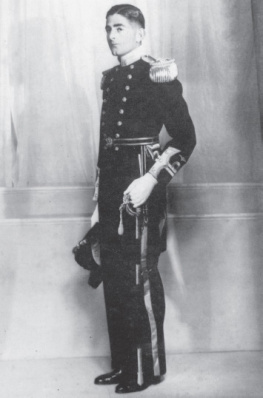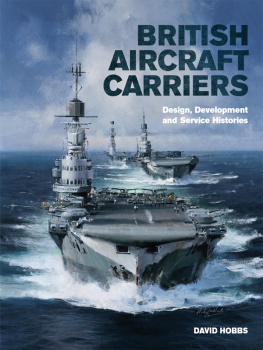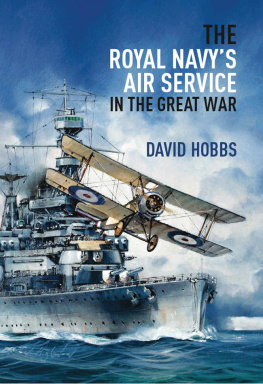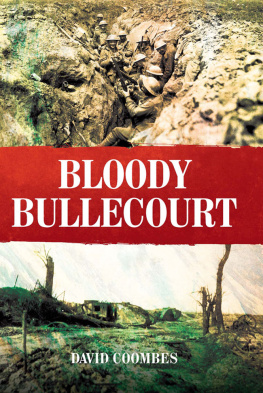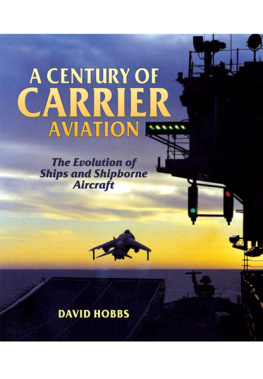Copyright David Hobbs 2019
First published in Great Britain in 2019 by
Seaforth Publishing,
A division of Pen & Sword Books Ltd,
47 Church Street,
Barnsley S70 2AS
www.seaforthpublishing.com
British Library Cataloguing in Publication Data
A catalogue record for this book is available from the British Library
ISBN 978 1 4738 7992 8 ( HARDBACK )
ISBN 978 1 4738 7993 5 ( KINDLE )
ISBN 978 1 4738 7994 2 ( EPUB )
All rights reserved. No part of this publication may be reproduced or transmitted in any form or by any means, electronic or mechanical, including photocopying, recording, or any information storage and retrieval system, without prior permission in writing of both the copyright owner and the above publisher.
The right of David Hobbs to be identified as the author of this work has been asserted by him in accordance with the Copyright, Designs and Patents Act 1988.
Pen & Sword Books Limited incorporates the imprints of Atlas,
Archaeology, Aviation, Discovery, Family History, Fiction, History, Maritime,
Military, Military Classics, Politics, Select, Transport, True Crime, Air World,
Frontline Publishing, Leo Cooper, Remember When, Seaforth Publishing,
The Praetorian Press, Wharncliffe Local History, Wharncliffe Transport,
Wharncliffe True Crime and White Owl.
Set in 10.75/13.2pt Minion Pro
Typeset and designed by JCS Publishing Services Ltd,
www.jcs-publishing.co.uk
Printed and bound in Great Britain by TJ International Ltd, Padstow
Lieutenant W P Lucy DSO RN, Lieutenant M C E Hanson DSC RN and their contemporaries deserve to be remembered for their considerable achievements against high odds in carrier-borne operations over the Norwegian littoral in April and May 1940. These were the first of their kind, and the gallant actions of these men marked the dawn of the era of carrier strike operations. This book is dedicated to them.
Foreword
N AVAL AVIATION SURVIVED as an important discipline within the Royal Navy after the armistice that ended the Great War in November 1918 because it had already demonstrated its importance. Argus , the worlds first aircraft carrier, was in commission and a number of aircraft were embarked in other warship types from battleships to seaplane carriers. There was, thus, an institutional structure for specifically naval aviation that had to be carried forward as part of the peacetime fleet even though politicians insisted that the Air Ministry should have administrative control of training and procurement to balance against the Admiraltys operational control at sea. The British Army, on the other hand, maintained no large formations at division, corps or army level like those that had fought on the Western Front. Unlike the Navy, therefore, it had no tactical air arm under its own orders.
This distinction is important because it helps to explain the basis of the argument that enabled the Admiralty, ultimately, to regain full control of its embarked air arm after nearly two decades of dual control and considerable political opposition. The era of dual control was undoubtedly a complex failure and in this book I shall examine why this proved to be the case in two ways. First by explaining the complex arguments and giving a sense of proportion to them, and then by making reference to the career of one man who distinguished himself during the period in question, Lieutenant William Paulet Lucy DSO RN. Known to friends and family as Bill, he joined the RN on 15 January 1924 to become a seaman officer and specialised as a pilot, flying fighters and reconnaissance aircraft from both aircraft carriers and cruisers in ), which had recently been re-equipped with the RNs first monoplane, the Blackburn Skua dive-bomber/fighter. On the day after the German invasion of Norway, after some weeks defending the Home Fleet in Scapa Flow and Allied convoys to and from Norway, he led the first air strike operation in history that sank a major warship, the German cruiser Knigsberg alongside the Skoltegrund Mole in Bergen. Bill Lucy was awarded the DSO for this operation, carried out at the aircrafts extreme radius of action in company with 800 NAS from the RN air station at Hatston near Kirkwall on the Orkney mainland. During 803 NASs subsequent brilliant embarked operations in the aircraft carriers Glorious and Ark Royal off the Norwegian coast, Bill Lucy carried out hazardous strike operations and flew fleet air defence missions, during which he became the first pilot in any Commonwealth or Allied air arm to shoot down five enemy aircraft, a total that would have led to him being described as a fighter ace in the United States Navy.
Before the war the Admiralty had expressed concern that the Fleet Air Arm lacked sufficient reserves to cope with heavy casualties but their recruitment in various forms was always opposed by the Air Ministry, and politicians failed to accept the Admiralty view. Events in 1940 were to show the justification of the Admiraltys concern and by the end of the short Norwegian campaign the RN had lost about one third of its front-line aircrew. They could not be replaced in the short term and among those lost were Lieutenant Bill Lucy and his observer Lieutenant Michael Hanson, who were shot down and killed on 14 May 1940.
For a variety of reasons that will be described below, the aircraft operated by the RN in 1940 were not the best of their type, but the quality and determination of their aircrew made a distinct difference and allowed the squadrons that fought in the Norwegian littoral to take on an enemy air force that should have been overwhelmingly powerful. That they achieved so much against such high odds is to the everlasting glory of the Royal Navys air arm. Bill Lucy was such a striking example of what an outstanding individual could achieve within that air arm between 1924 and the first months of the Second World War up to May 1940 that even brief references to his career give insight into the development of naval aviation.
Alongside the human story, I have described how the aircraft carriers and aircraft developed after 1919, how progress in the RN differed from that in the and how the RN eventually regained full control of its air arm with the Inskip Award of July 1937. There are lessons from this period that apply directly to defence matters two decades into the twenty-first century and I hope that this book will stimulate interest and discussion in a wide cross-section of readers.
David Hobbs MBE
Commander Royal Navy (Retired)
Alnwick
July 2018



